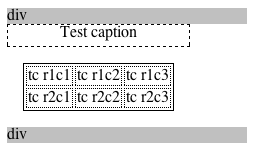Signs of Intelligence
Published 20 years, 10 months pastThis morning, Carolyn told me quite clearly that she wanted some yogurt for breakfast. Technically, what she said was “more baby”, but I knew what she meant.
How did a 13-month-old manage to tell me what she wanted? By using sign language. Kat and I have been teaching her Baby Signs, which is a simplified version of American Sign Language. I’m given to understand that Baby Signs figure in the plot of the recent movie Meet The Fockers, but don’t let that sour you on the idea. The amazing thing is that it really does work, if you’re willing to put in time and effort.
At this point, we’re actually looking more to real ASL signs than we are to the Baby Signs vocabulary when teaching Carolyn new signs. I think the real utility of Baby Signs is that it gets you started where it makes the most sense: teach your baby signs like “food”, “water”, “more”, and “all done”. This allows the child to communicate their wants and needs long before they ever become verbal. It works because motor skills advance more quickly than verbal skills do. I’ll be very interested to see if Carolyn retains the signing as she grows up, or if she’s able to pick up secondary languages more easily.
Carolyn’s first sign was “hat”, which of course didn’t help at all with deducing her needs, but it was still incredible to witness. I was actually there when she figured it out. She was looking through a Baby Signs board book while I stood watching. She stared very intently at a picture of a baby signing “hat”, and then put her hand to the side of her head, just like in the picture. My jaw dropped, but I managed to keep quiet. She did it a couple more times, then looked up at me. That’s when I showered the praise. It only took a day or two to teach her that the actual sign for “hat” is to pat the hand on the head, not just place it there, like she saw in the picture. Now Carolyn signs “hat” whenever she sees a picture of one of her grandfathers, because they both wear hats all the time.
Her signing vocabulary is now about thirty words, and she’s actually devised two signs of her own—which means, unfortunately, that we have no idea what she’s trying to say when she makes them! But we’ll figure it out eventually.
As for how “more baby” means “I want yogurt”, that’s because we quickly noticed that when Carolyn signs “more” what she really means is “I want”. As for “baby”, the yogurt we feed her has a picture of a baby on each container. One day she walked over to the refrigerator, patted the door, and signed “baby”. Then she had to do it a few more times while the rest of us scratched our heads and said things like, “The refrigerator’s not a baby, sweetie. What are you trying to say?” before finally figuring it out.
Sometimes I think she’s smarter than we are.
So if you’re a new parent or a parent-to-be, I strongly recommend that you try this with your own baby. When a baby starts waving bye-bye, that’s when they’re ready to start learning sign language. (We started earlier than that, hoping to lay a foundation, and may or may not have been wasting our time.) It will help reduce frustration, and therefore tantrums, because you’ll be better able to meet their needs when they have them. The system isn’t perfect, of course: any baby that gets too upset will be unable to communicate with anything besides tears. It’s still a great thing when your toddler comes into the room and signs “food” long before the hunger starts making her cranky.
I wonder if the children of deaf parents, whether they themselves are deaf or not, have long benefitted (tempramentally and intellectually) from signing, and nobody outside the deaf culture bothered to notice.
 In Safari, you see, the caption’s element box is basically made a part of the table box. It sits, effectively, between the top table border and the top margin. That allows the caption’s width to inherently match the width of the table itself, and causes any top margin given to the table to sit above the caption. Makes sense, right? It certainly did to me.
In Safari, you see, the caption’s element box is basically made a part of the table box. It sits, effectively, between the top table border and the top margin. That allows the caption’s width to inherently match the width of the table itself, and causes any top margin given to the table to sit above the caption. Makes sense, right? It certainly did to me.
 This is the behavior evinced by Firefox 1.0, and as unintuitive as it might be, it’s what the specification demands.
This is the behavior evinced by Firefox 1.0, and as unintuitive as it might be, it’s what the specification demands.